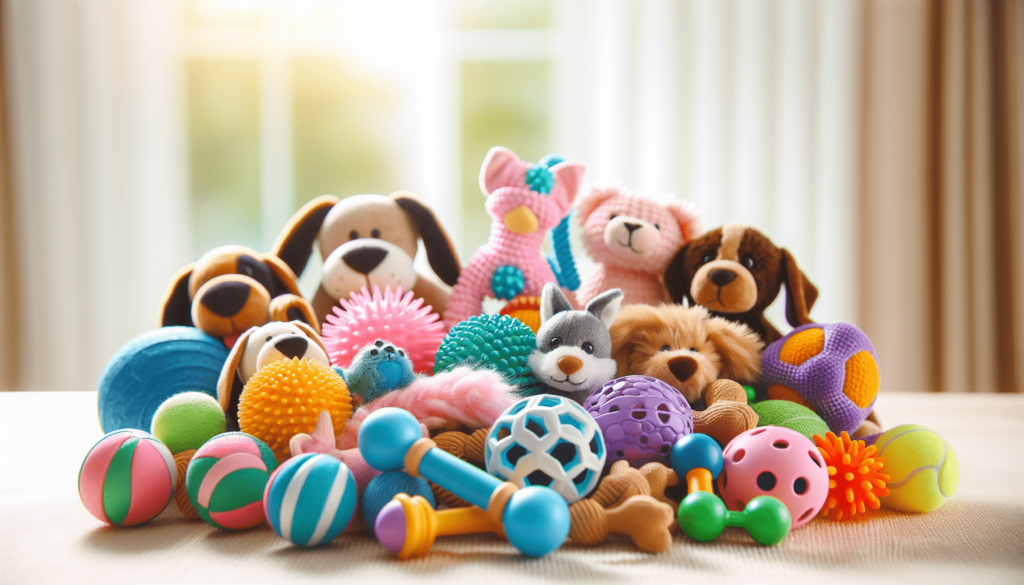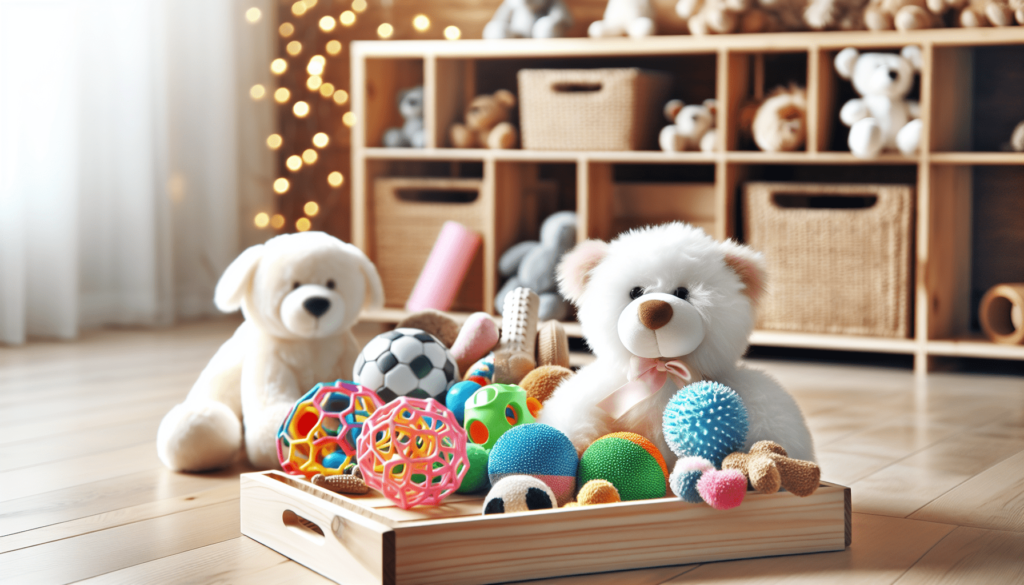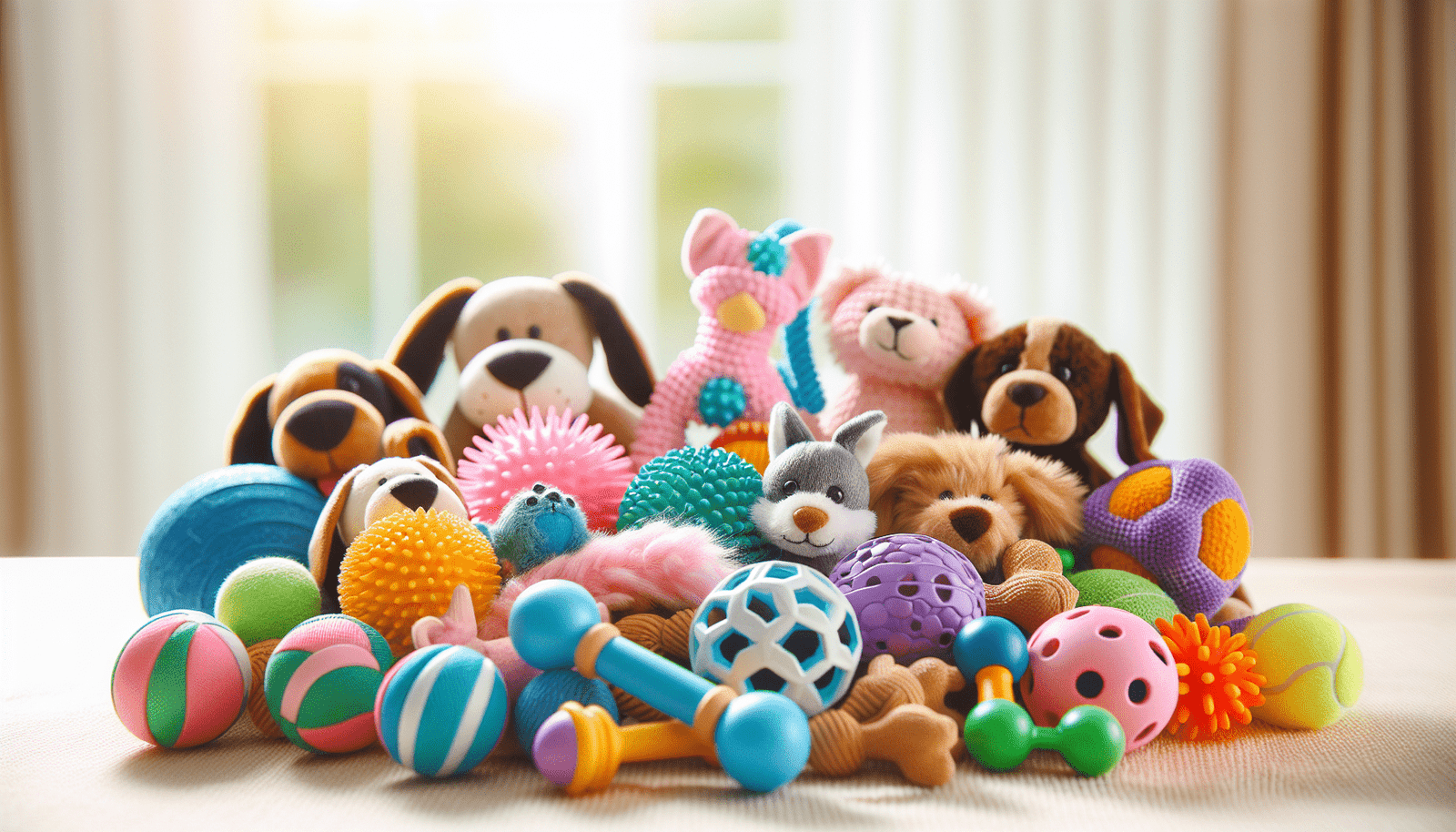Have you ever considered how clean your pet’s toys are? It’s one of those things that can easily slip your mind amid the daily care routine for your furry friend. Yet, just like you appreciate a fresh set of sheets or a tidy living room, your pet’s toys also deserve some TLC to ensure they are hygienic and safe.

Understanding the Importance of Clean Pet Toys
Pet toys, much like any other frequently used item, can become a breeding ground for germs, dirt, and sometimes even parasites. Whether your pet loves a squeaky plush toy, a hard rubber ball, or a rope for tug-of-war, each can collect saliva, soil, and other unwelcome guests that your pet might drag in from outdoors. Though it’s tempting to overlook this aspect of pet care, keeping their toys clean is crucial for their health and well-being.
Why Cleanliness Matters
When you take just a moment to think, it’s clear that your pet uses their mouth for exploration and play. It’s a key reason to keep their toys clean. Any bacteria or dirt on their toys can directly affect their dental health, and in more serious cases, lead to digestive issues or infections. Ensuring their toys are regularly cleaned means fewer visits to the vet and a happier, healthier pet at home.
Signs that Toys Need Cleaning or Replacing
There are certain tell-tale signs when toys need a good scrub. If the toy smells, looks visibly dirty, or has a sticky residue, these are clear indicators that it’s time for a wash. Similarly, if toys have tears, broken pieces, or have become worn down, it might be more appropriate to replace them entirely. Damaged toys can pose hazards such as choking or ingestion of small parts.
How Often Should You Clean Pet Toys?
The frequency of cleaning pet toys can vary depending on their material and how often your pet plays with them. A simple rule of thumb is to clean them as often as you wash your pet’s bedding or whenever they look dirty. However, certain toys might require more frequent attention.
Plush Toys
Plush toys for dogs and cats, especially if they are cherished favorites, can accumulate a significant amount of dirt and saliva quickly. It’s generally recommended to wash them every two weeks.
Rubber and Plastic Toys
Toys made of rubber or plastic are easier to clean and typically need a scrub once a week. Since these materials don’t absorb saliva and can be wiped down swiftly, they are a bit less demanding than their plush counterparts.
Ropes and Tug Toys
Rope toys can be a bit trickier. These may need washing even more often due to the potential to harbor bacteria. Consider a weekly wash, and replace them if they begin to fray.

Cleaning Methods for Different Types of Pet Toys
When it comes to washing your pet’s toys, one size does not fit all. Depending on the material, the methods and products used can vary. Let’s break it down, so it’s easier for you to follow.
Machine-Washable Toys
Some plush and cloth toys can be conveniently tossed in the washing machine. Make sure to use a gentle cycle with hot water to kill any germs. Opt for a pet-safe detergent, which is free from harsh chemicals that could be harmful if ingested.
- Preparation: Check the labels on the toys to ensure they are machine safe.
- Washing: Use a mesh laundry bag for smaller toys to keep them intact during the wash cycle.
- Drying: Air drying is the safest option, but if necessary, tumble dry on a low-heat setting.
Cleaning Hard Rubber, Plastic, and Nylon Toys
These materials are generally more robust and can handle a bit more vigorous scrubbing. Fortunately, they are often dishwasher safe, making your job easy.
- Dishwashing: Ensure the toys are placed securely on the top rack of the dishwasher and run them through a hot cycle with a pet-safe dish detergent.
- Handwashing: If handwashing, use a scrub brush and a mild soap solution to clean thoroughly.
Sanitizing Rope Toys
Rope toys are unique because of their absorbent nature. Boiling them can help eliminate bacteria, but this method also has its own set of instructions to ensure safety.
- Boiling: Submerge the toy completely in a pot of boiling water for at least five minutes.
- Microwave: For an alternate method, dampen the toy thoroughly and microwave on a high setting for about one minute to sanitize.
Use of Natural Cleaning Agents
If you lean towards natural solutions for cleaning, you’re in luck. Products like white vinegar and baking soda are effective and safe for pets.
- Vinegar Solution: A mixture of half vinegar and half water can effectively clean and deodorize most toy types. Simply soak and then rinse thoroughly.
- Baking Soda Paste: Create a paste with water for scrubbing hard and textured surfaces of toys. Rinse thoroughly after application.
When Should You Replace Pet Toys?
Sometimes, toys are beyond cleaning and need replacing instead. It’s better to retire a toy than risk your pet’s safety. Here’s what to look for when deciding whether to toss them out.
Indicators for Replacement
- Structural Damage: Tears in plush toys or fractures in hard toys.
- Foul Odor: Persistent smell that doesn’t go away with cleaning.
- Material Degradation: When the toy has changed texture or is visibly breaking down.
Life Span Recommendations
- Plush Toys: Replace every six months to a year, depending on wear.
- Rubber and Plastic Toys: Can last a year or more with good maintenance.
- Rope Toys: Replace every few months due to potential fraying and bacteria.
Taking Pet Safety to Heart
Keeping your pet safe requires paying attention to the small details of their environment, and toys are a big part of that. Proper cleaning and timely replacement ensure their playtime is both fun and secure.
Observing Your Pet’s Behavior
Watching how your pet interacts with their toys can offer additional insights. If your pet loses interest in a toy, it may simply be dirty, or they might not enjoy it as much anymore. A good wash or a new toy might rekindle their enthusiasm.
Consult with Your Vet
When in doubt, don’t shy away from asking your veterinarian. They can provide insights specific to your pet’s habits and necessary health precautions, especially if your pet has a history of certain allergies or sensitivities.
Final Thoughts
Though the task of cleaning and replacing pet toys can feel painstaking, understanding its importance makes it less of a chore and more an act of care for your beloved pet. With a few routines in place, you can ensure your pet’s toys are always ready for play and, most importantly, safe.
By prioritizing clean toys, you contribute to your pet’s happiness and health, which undoubtedly, returns to you in wagging tails and joyful purrs.
